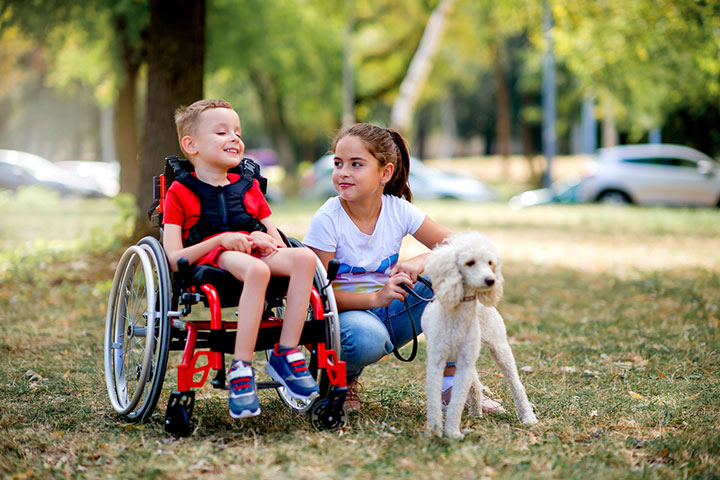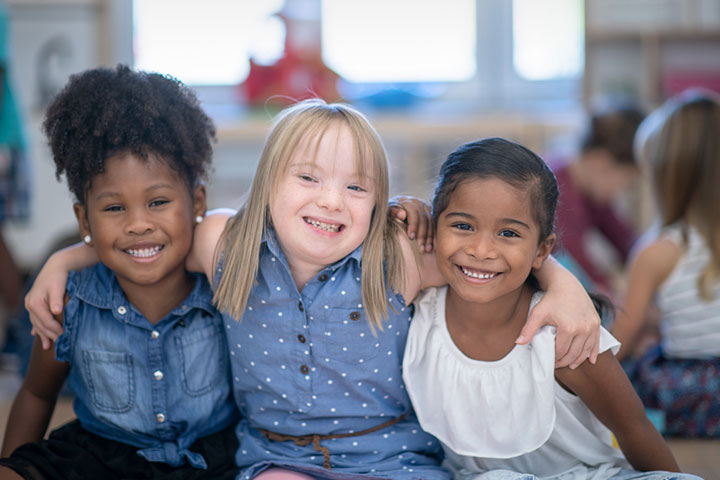
Image: iStock
Special education inclusion is a topic that has been heavily debated in the last couple of years. Many parents with children who have disabilities or those in need of special attention feel like they should be included in regular school systems. Whereas others debate that it may be more beneficial for the kids to learn outside the confines of a classroom, in an environment more suited to their needs. Special education inclusion is at its core, a societal ideology that seeks to encourage kids with special needs to study alongside their non-disabled peers, in a regular classroom. And although the concept is enriching for students it can be extremely challenging to implicate. After all, disabilities vary in complexity. But where there is a will, there is always a way. And with a positive attitude and some knowledge, special education inclusion can be a possibility. If you’d like to know more about special education and its benefits then this is the article for you. Read on to know more!
What Is Special Education?
Special education refers to the education given to children with disabilities, be it physical, psychological or a learning disability. They are usually one on one sessions with a teacher in an environment that is comfortable for the student or in a school meant specifically for disabled children, in a small group. But it is also important to find ways of making special education more inclusive and flexible in nature. After all, inclusion is crucial to every child of any age irrespective of if they have a disability or not. And as we all know, diversity can lead to a lot of creativity which can give rise to great ideas. Children with disabilities may require some time to adapt to the curriculum. But it is important to impart onto them that they are as responsible for their academic expectations as the general students. Modifications to the curriculum only lower these expectations. The most important thing is to find a way to include disabled students in general classrooms in a way that will benefit them and help them thrive.
How Can Inclusion Help In Special Education?
1. Helps In Fulfilling Individual Needs
Every student is different and each one has their own needs in order to understand a specific concept. And that is especially true of children with disabilities, but it is not uncommon for non-disabled kids to find curriculum challenging as well. Teachers can focus on meeting the individual needs of all students by presenting lessons using a system called Universal Design Learning. This essentially allows the students to form smaller groups and the teacher can teach them by making a specific education plan to help them learn in a way that plays to their strengths and improves their weaknesses. This is also called differentiated instructions in certain school settings.
2. Diverse Resource Usage
In many traditional education settings, students with disabilities are usually provided with some services related to their specific disability, such as speech therapy. Inclusion education classrooms will ensure that there is both a speech therapist and a reading specialist in the classroom together. They are not meant only for the disabled children but for all the kids. So that they can all benefit from having a specialist cater to their needs, no matter how great or small they are!
3. Helps In Developing Leadership Qualities
Students who learn in a more inclusive environment naturally develop leadership skills. They learn how to take responsibility for themselves while also taking care of each other. There are usually some students who are natural leaders and stand up for their friends when they are having a hard time or are bullied. A more diverse classroom gives children the freedom to explore their skills and strengths and helps them identify their capabilities. This would not be possible if they were separated.
4. Reduced Stigma
Many people have a stigma around people with disabilities and that’s because they haven’t been around them long enough to know how alike we all really are. The best way for the forthcoming generation to remove any stigma surrounding disabled people is to study alongside them. This way they will come to understand that people are unique and that we all have our own strengths and weaknesses. You must realize that disabled and non-disabled people live side by side in society. And so the best way to ensure that society as a whole learns to accept disabled people is to introduce them to kids from an early age. They will learn to build a sense of community and value each other’s contribution to society.
Having a disabled child brings about many challenges, but inclusion should not be one of them. With a little work and effort special education can become inclusive and benefit both disabled and non-disabled kids!















